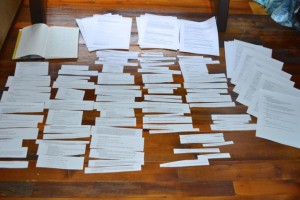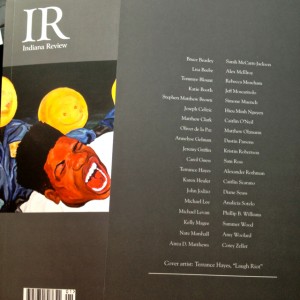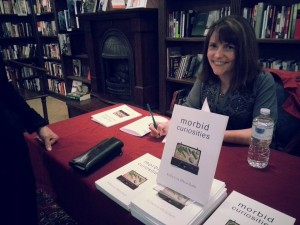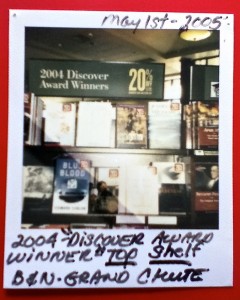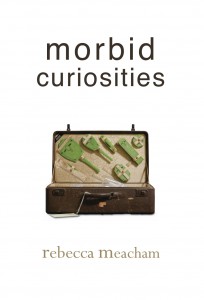The wonderful writer Kathy Fish tagged me to be a part of the Writing Process Blog Tour. (Also, I’m grateful for Kathy Fish’s flash fiction, which inspires and teaches me, always.)
Now I shall pose some questions to myself— and answer them.
Q. So, Rebecca. You’ve written two collections of short fiction. What are you working on now?
A. [Laughs] Ha! Everything and nothing! Did you ever have a luxurious pocket of time set aside for writing, and your day job is on hold for the summer, and you’ve got childcare for your kids and daycare for your dog and your spouse is supportive— and all you do is sit at your computer, staring, stopping only to pound your head against your desk?
Already, I’ve written more and better words on this blog post than I have all summer.
That said, my projects include a big, complicated novel set in 1871 Wisconsin, in the months leading up to the Peshtigo fire, which occurred the same night as the Great Chicago Fire. On the side, I’m writing some fairly juicy short stories (telekinesis! maiming! naughty nannies!) and some rather sad nonfiction. Plus, I also blog about writing for Ploughshares.
Q. Interesting. How does your work differ from others of its genre?
A. That’s a great question.
Q. I thought so. [Laughs]
A. To answer your question, the 1871 novel is historical and multi-vocal— lots of characters’ voices and perspectives— and it follows three families whose lives are dramatically changed by the fire (which killed around 2000 people). It’s kind of like Ragtime meets A Visit From the Goon Squad meets Love Medicine, or so I hope.
Plus, there’s a chapter narrated from the point-of-view of a comet.
Q. A comet! That’s genius!
A. I thought so. [Laughs]
Q. Why do you write what you do?
A. I’m interested in what’s left unsaid—whether that’s due to a character’s position, self-repression, inexperience, or powerlessness. Vantage points outside of, and overshadowed by, another, larger story. (The Peshtigo Fire of 1871 is an example— it’s often called “the Forgotten Fire.” I mean, have you heard of it?) One of my favorite recent writing experiences was using the language of an 1874 primer to express the pain and escape of girls at an Indian Boarding School. I’ve written elsewhere about the joys and challenges of constraints in fiction. Even in my nonfiction, I’m drawn to moments in my own experience that are the hardest to articulate.
Q. How does your writing process work?
A. Usually, a character’s voice, or a line of dialogue, or a question creates an intellectual irritation. A grain of sand for the oyster. A lost tooth in the gum line. Pick your metaphor; all I know is that I can’t leave it alone until I’ve either made something interesting— or tangled myself into messes too difficult to straighten.
My energy is highest when that irritant is new. Most of the time, the first section or opening lines of a piece fall out quickly and completely. Then, there’s the long, dismal middle of despair, when I have no idea what to do next. This can last for years. [Sighs]
Q. Well, I, for one, feel edified by this conversation. Who’s next on the Writing Process Blog Tour?
A. I’ve asked the following marvelous writers to join the tour. Look for their responses on their own blogs on July 31!
Lisa Mecham writes a little bit of everything. Her work has appeared in The Rumpus, Barrelhouse Online and Juked, among other publications. A Midwesterner at heart, Lisa lives in Los Angeles where she’s revising her first novel and of course, writing a screenplay. Visit her website here: http://lisamecham.com
Kelcey Parker is the author of LILIANE’S BALCONY (Rose Metal Press), a novella set at Frank Lloyd Wright’s Fallingwater. Her story collection, FOR SALE BY OWNER (Kore Press), won the 2011 Next Generation Indie Book Award in Short Fiction, and her stories have appeared in Notre Dame Review, Bellingham Review, Santa Monica Review, Indiana Review, Third Coast, Redivider, Western Humanities Review, and Image. She blogs at: http://phdincreativewriting.wordpress.com/

